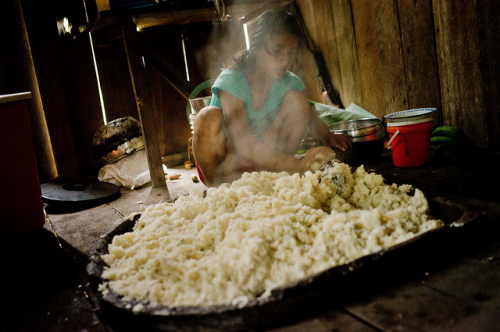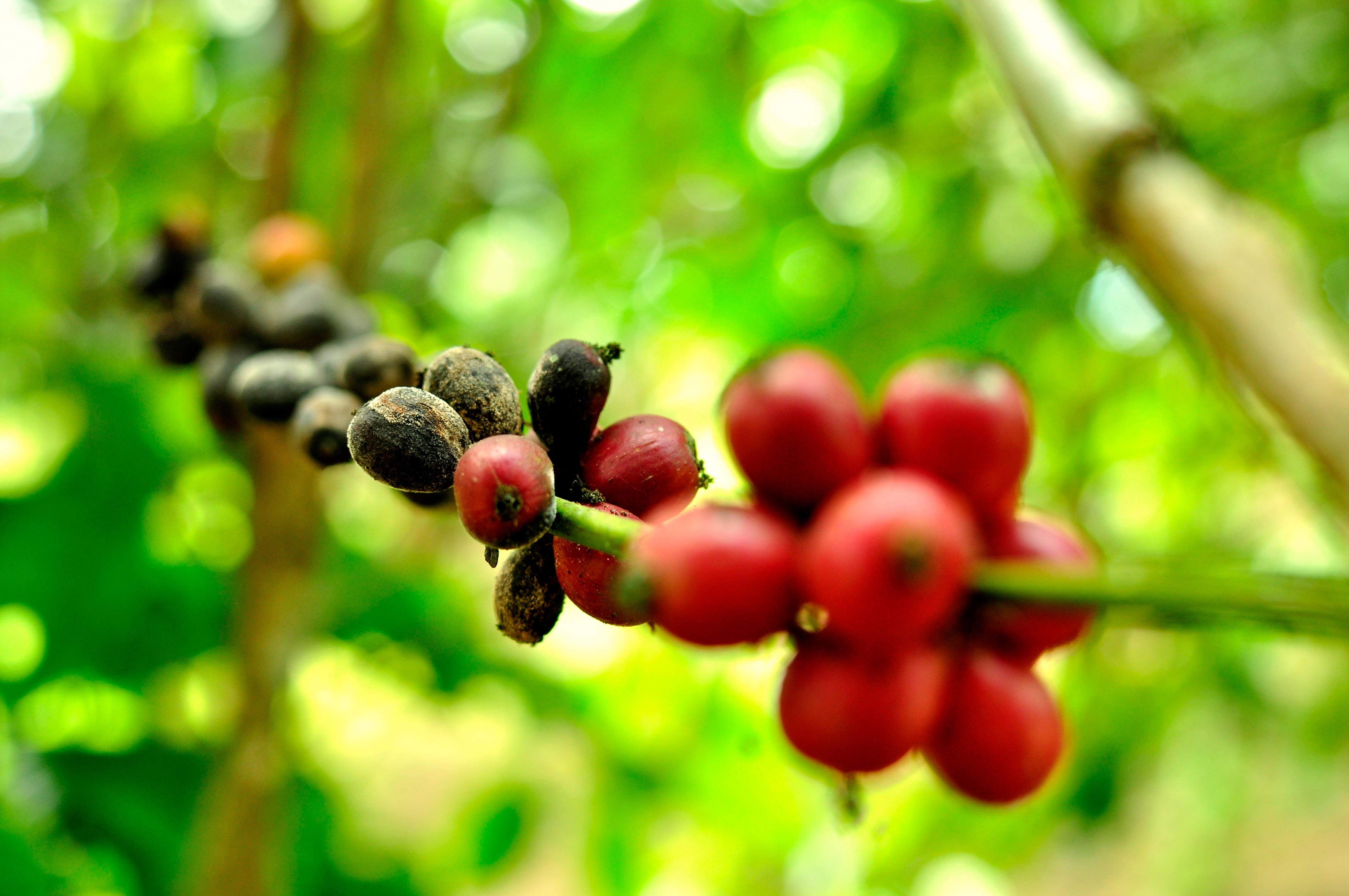The recipe for dokoum, or croquettes made from the wild temple plant, calls for the fresh leaves of Crataeva religiosa, salt, potash and water. The leaves are placed in salted boiling water for 20 minutes together with the potash, then drained, cooked again and formed into balls. Shea butter is a good accompaniment.
Another sauce comprises of the dried leaves of the native African baobab tree, shea butter, fermented sorghum and chili peppers. The sorghum is soaked in water with the chilis, and the rest of the ingredients are added and cooked until the sauce is thick and ready to eat.
Emerging from the efforts of scientists from the Center for International Forestry Research (CIFOR) and their partners, this collection of indigenous recipes from forest vegetables collected in 10 villages in the Dagara region of Burkina Faso unveils the diversity of foods available from the forest.
Scientists working in the area since 2013 have been striving to increase awareness about the vast ecological knowledge of local communities. This includes documenting the range of foods available in traditional diets and the extent of peoples’ dependence on forests and trees – with the goal to renew appreciation for wild foods, enhance sustainable food production, communicate the value of forests for local food security and, ultimately, to improve diets.
In Ethiopia, researchers collected 218 food plant species and in Burkina Faso 494 specimens, detailing local and scientific names, plant descriptions, habitat and use information. In Zambia, they found that caterpillars from forests are a key source of micronutrients for local communities during the lean season.
WEALTH DOESN’T EQUAL HEALTH
One major research finding is that an increase in income for rural communities does not necessarily correspond to an improvement in diet. For example, if an area is subject to deforestation, and crops like rice or corn are planted instead, fruit trees, vegetables and hunting options are likely sacrificed. Caloric intake may increase, but overall diet quality may decline with increased spending power going to processed foods like instant noodles, in the case of Indonesia.
Researchers are finding that many forest foods are providing essential nutrients like zinc and Vitamin A to local diets. For example, kama, a green vegetable found in forests in Benishangul-Gumz, Ethiopia, provides local communities with high amounts of iron and potassium and is the most commonly eaten vegetable in the study area. In southwest Burkina Faso where baobab leaves are perhaps the best known, communities use a wide variety of leaves from trees in their diets. Several are high in key minerals and vitamins. In addition, in some of their research sites, communities get the majority of their animal source foods from the forest.
In Africa, researchers found that the diets of children living near forests were better than those living in less forested landscapes. Analyzing the dietary intakes of 93,000 children from across the continent, they looked at dietary diversity, consumption of fruit and vegetables and consumption of animal products. They posit that low-income households in rural forested regions often farm their own food or obtain fruits and nuts from the surrounding forests, thereby supporting a higher quality diet than households where there is less space to farm or find food.
They had similar results in Indonesia – where micronutrient deficiency remains a serious problem – looking at children’s diets and finding that those living in tree-dominated landscapes in some provinces had healthier diets than children living in the same regions without trees.
The study examined how often children ate from micronutrient-rich food groups, based on data from a demographic health survey. Their most striking result was found in West Kalimantan, where diets were found to be healthier for kids living near swidden and agroforestry landscapes.
Where there is greater deforestation, people’s diets – and trees – may pay the price.
One CIFOR study in south Cameroon suggests that conversion of land to palm oil is threatening local food security. While some smallholder producers of palm oil welcomed the conversion to the high-yield crop, others were unable to profit from it, and with limited income, found it difficult to access food.
As scientists continue their work, they are looking deeper into these unforeseen consequences on diets. By pursuing research in such disparate landscapes as the miombo forests of Zambia or the oil palm-covered terrain of Borneo, they can gain a deeper understanding of people’s relationship to forests, and the foods they find there.
We want you to share Forests News content, which is licensed under Creative Commons Attribution-NonCommercial-ShareAlike 4.0 International (CC BY-NC-SA 4.0). This means you are free to redistribute our material for non-commercial purposes. All we ask is that you give Forests News appropriate credit and link to the original Forests News content, indicate if changes were made, and distribute your contributions under the same Creative Commons license. You must notify Forests News if you repost, reprint or reuse our materials by contacting forestsnews@cifor-icraf.org.

